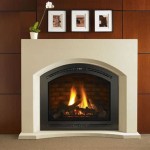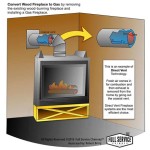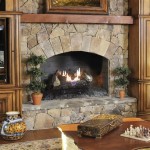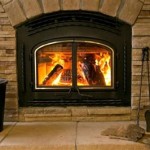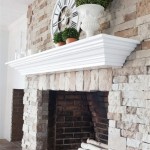The Enduring Appeal of Real Stone Fireplaces
Real stone fireplaces represent a timeless architectural feature that adds warmth, character, and value to a home. Unlike manufactured alternatives, real stone provides a unique sense of authenticity and natural beauty that is difficult to replicate. The installation of a real stone fireplace is a significant investment, but its aesthetic appeal, durability, and functional benefits often justify the cost. This article will delve into the various aspects of real stone fireplaces, exploring their material properties, design considerations, installation process, and maintenance requirements.
The term "real stone" encompasses a wide variety of natural materials, each with distinct characteristics regarding color, texture, and density. Common choices include granite, limestone, marble, slate, and fieldstone. Granite, known for its strength and durability, is available in a range of colors and patterns. Limestone offers a softer, more porous texture and is often favored for its warm, neutral tones. Marble, highly prized for its elegance and veining, requires careful selection and maintenance due to its susceptibility to staining and etching. Slate, with its distinctive layering and resistance to heat, provides a rustic and sophisticated aesthetic. Fieldstone, typically sourced directly from the surrounding landscape, offers a unique and organic appearance. The choice of stone profoundly impacts the overall look and feel of the fireplace.
The appeal of a real stone fireplace extends beyond its visual characteristics. The thermal properties of stone contribute to its functionality as a heat source. Stone absorbs heat slowly and radiates it gradually, providing a consistent and comfortable warmth to the surrounding space. This radiative heat is often perceived as more pleasant and less drying than the forced air heating systems commonly found in modern homes. Furthermore, a well-designed and properly installed stone fireplace can significantly improve a home's energy efficiency by reducing reliance on conventional heating methods.
Material Selection and Aesthetic Considerations
The selection of the appropriate stone is paramount to achieving the desired aesthetic and ensuring the long-term performance of the fireplace. Factors to consider include the overall architectural style of the home, the desired level of formality, and the existing color palette. A contemporary home might benefit from the clean lines and consistent color of machined granite or stacked slate, while a more traditional setting could be enhanced by the rustic charm of fieldstone or the classic elegance of limestone. The size and shape of the individual stones also play a crucial role in the overall design. Larger stones create a bolder and more imposing presence, while smaller, irregularly shaped stones contribute to a more textured and organic look.
Color matching with the existing decor is another important aspect of stone selection. Neutral tones such as gray, beige, and cream tend to be the most versatile, complementing a wide range of interior styles. However, bolder colors and patterns can be incorporated to create a focal point and add visual interest to the room. The texture of the stone also contributes to the overall aesthetic. Smooth, polished surfaces offer a sleek and modern look, while rough, textured surfaces provide a more rustic and tactile feel. The joints between the stones, whether narrow and precise or wide and filled with mortar, further influence the appearance of the fireplace.
Beyond the stone itself, the design should incorporate other architectural elements, such as the mantel, hearth, and firebox. The mantel serves as a decorative shelf above the firebox and can be crafted from a variety of materials, including wood, stone, or metal. The hearth, the non-combustible area in front of the firebox, provides a safe surface for placing firewood and prevents embers from spreading. The firebox, the chamber where the fire burns, should be sized appropriately for the room and designed to maximize heat output and efficiency.
The Installation Process: A Detailed Overview
The installation of a real stone fireplace is a complex and labor-intensive process that requires specialized skills and knowledge. It is highly recommended to engage experienced professionals who are familiar with the specific requirements of stone masonry and fireplace construction. The process typically involves several stages, starting with the preparation of the foundation and the construction of the firebox and chimney. The foundation must be strong and stable enough to support the weight of the stone, which can be considerable. The firebox and chimney must be constructed according to local building codes and safety regulations, ensuring proper ventilation and preventing the escape of smoke and carbon monoxide.
Once the foundation and firebox are in place, the stone can be laid. The stones are typically mortared in place, with the joints carefully filled to create a seamless and durable surface. The mortar is typically a mixture of cement, sand, and lime, and it is important to use a high-quality mortar that is specifically designed for stone masonry. The stones are carefully selected and arranged to create a visually appealing pattern, taking into account the natural variations in color and texture. The installation process requires patience, precision, and attention to detail, as even small errors can compromise the structural integrity and aesthetic appeal of the fireplace.
The installation process often involves the use of specialized tools and equipment, such as stone saws, chisels, and levels. The stones may need to be cut or shaped to fit the desired design. The mortar must be mixed correctly and applied evenly to ensure a strong bond between the stones. The joints must be carefully tooled to create a consistent and professional finish. The process can be time-consuming, especially for larger and more complex fireplaces. The installation must be inspected by a qualified building inspector to ensure that it meets all applicable building codes and safety regulations.
Maintenance and Safety Considerations
Maintaining a real stone fireplace is essential to preserve its beauty and functionality. Regular cleaning and inspection can prevent damage and ensure safe operation. The fireplace should be cleaned after each use to remove ashes and soot. A fireplace shovel and brush can be used to remove loose debris, and a vacuum cleaner with a hose attachment can be used to clean hard-to-reach areas. The chimney should be inspected annually by a qualified chimney sweep to check for obstructions and creosote buildup. Creosote is a flammable substance that can accumulate in the chimney and cause a fire.
The stone itself may also require periodic cleaning to remove stains and dirt. The type of cleaning solution will depend on the type of stone. Mild soap and water are generally safe for most types of stone, but harsh chemicals and abrasive cleaners should be avoided, as they can damage the surface. Pressure washing is generally not recommended, as it can erode the mortar joints and damage the stone. Sealing the stone can help to protect it from stains and moisture. A penetrating sealer is typically applied to the surface, which repels water and prevents it from penetrating the pores of the stone.
Safety is paramount when operating a real stone fireplace. Never leave a fire unattended, and always use a fire screen to prevent sparks from escaping. Keep flammable materials away from the fireplace, and never store firewood too close to the firebox. Ensure the proper ventilation to prevent the buildup of carbon monoxide. Install carbon monoxide detectors in the home and test them regularly. Have the fireplace and chimney inspected regularly by a qualified professional to ensure that they are in good working order. By following these safety precautions, homeowners can enjoy the warmth and beauty of a real stone fireplace without compromising their safety.

Natural Stacked Stone Veneer Fireplace Ideas

Country Home For Entertaining In Rustic Luxury Natural Stone Kitchen Veneer Fireplace

Stone Fireplace Surround Ideas You Ll Love Columbia Mo

Natural Stone Fireplace Designs By Battaglia Homes Custom Builder

Real Stone Veneer Fireplace And Chimney Authority

Professional Stonework Stone Fireplace Surround Hearths

Stone Fireplace Makeover Part 1 Plans Prep Organized Ish

Remodel Your Fireplace In Natural Stone Use

Thincut Natural Stone Veneer Csi All Things Can En

Natural Stone Fireplaces Adirondack Granite Mantles Hearths
Related Posts

